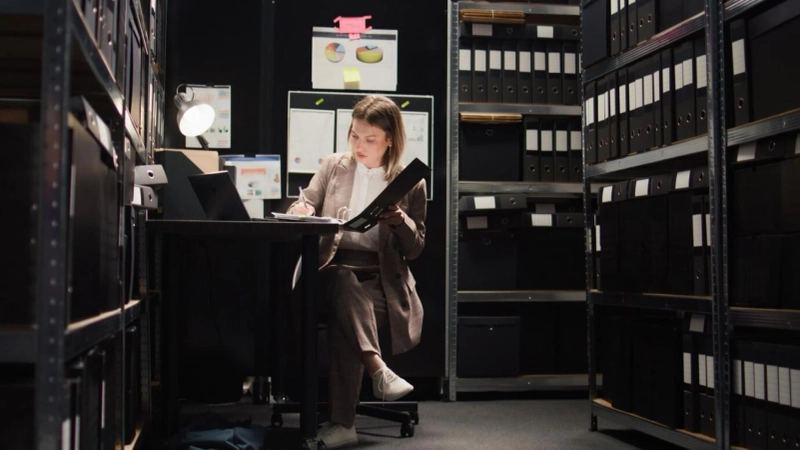Despite advancements in digital inclusivity, much of the internet remains inaccessible to people with disabilities. This startling fact shows why document remediation has become crucial in today's world. People with disabilities make up the world's largest minority market, but many organizations find it difficult to create truly accessible digital content.
Document remediation services convert unusable PDFs and digital documents into formats that work easily with assistive technologies. These services ensure compliance with WCAG and Section 508 regulations. They also improve the user experience for individuals with disabilities. Document accessibility companies also help organizations boost their digital presence through better search engine optimization while showing their dedication to inclusivity.
This piece explains how document remediation services can turn accessibility challenges into opportunities. It covers everything from simple compliance requirements to advanced optimization techniques that help all users.
What is Document Remediation and Why Does It Matter?
Document remediation is a systematic process that modifies digital files to make them available to people with disabilities. This specialized procedure changes existing documents into accessible versions that work with assistive technologies.
Document remediation analyzes and rebuilds documents to remove barriers that stop people with disabilities from accessing information. These barriers might not be visible to people without disabilities, but they create major obstacles for millions of users worldwide.
The process involves several technical steps:
- Restructuring document architecture to support screen readers
- Adding alternative text descriptions for images and graphics
- Creating proper heading hierarchies to direct navigation
- Making reading order match visual presentation
- Meeting accessibility standards for color contrast
- Adding tags to identify document elements (headings, lists, tables)
- Making interactive elements like forms work with keyboards
A document accessibility company has specialists who know both the technical requirements of accessibility standards and what users with disabilities need. These experts use special software and techniques to turn problematic documents into fully compliant versions.
Several compelling factors drive the need for document remediation. Digital accessibility gives everyone equal access to information. When organizations send out inaccessible documents, they leave out people with visual impairments, cognitive disabilities, motor limitations, and other conditions from getting critical information.
Document accessibility services help organizations fix a common mistake—thinking that turning a document into a PDF makes it accessible. Standard PDFs often create significant problems for people who use assistive technology. A document might look great with graphics, complex layouts, and formatting but become useless for someone using a screen reader.
Besides, legal risks are bound to arise when organizations publish inaccessible content. Laws requiring accessible documentation keep changing worldwide. Beyond following laws, document remediation brings real business benefits. Organizations that make accessibility a priority often find they improve user experience, document quality, and searchability. All these factors directly boost their bottom line.
Common Accessibility Issues and How Document Remediation Services Address Them
Digital documents create barriers for users with disabilities without proper formatting. Document remediation services find and fix these obstacles to make content available to everyone. Let's get into the most common accessibility challenges and see how professional remediation tackles them.
I. Heading Structure
Screen reader users face major navigation problems with improper heading structure. Documents without properly tagged headings make it hard for people who use assistive technology to find their way through content.
Document accessibility companies fix this by using proper heading hierarchy (H1, H2, H3, etc.) that matches the document's logical structure. This helps users to:
- Jump between sections using keyboard shortcuts
- Understand the document's organization through a generated outline
- Find relevant content directly without reading everything in order
Well-structured headings help all users by creating a visual organization that makes content easier to understand and remember.
II. Alternative Text for Images and Graphics
Visual elements without text descriptions create one of the biggest accessibility barriers. Screen reader users miss vital information when images, charts, diagrams, and other graphics lack descriptive text.
Document remediation services add alt text that:
- Describes what images show and why they matter
- Gives equivalent information for complex visual data like charts and graphs
- Points out decorative images that screen readers can skip
This detailed work needs an understanding of both content context and what visually impaired users need. Professional document accessibility services make sure alt text informs without being wordy or repetitive.
III. Hyperlinks
Generic hyperlinks like "click here" or "read more" confuse screen reader users who often explore links without context. These vague links force users to hear surrounding text to understand where they lead.
Document accessibility companies turn unclear links into descriptive ones that show their destination. For instance, "Click here to view our privacy policy" becomes "view our privacy policy." Such small changes make navigation quicker.
The professional remediation process also ensures links have proper visual formatting (underlining, color contrast) and work with keyboards—essential features for users who can't use a mouse.
IV. Tables and Data
Poorly structured tables hinder accessibility. Screen readers read tables row by row from left to right, which makes complex tables with merged cells, split headers, or nested tables hard to understand.
A document accessibility company fixes tables to ensure:
- Header cells are marked and tagged correctly
- Rows and columns connect properly
- Complex tables become simpler where possible
- Table summaries or captions explain what the table shows
These changes help screen reader users navigate tabular data while keeping information useful for everyone.
V. Reading Order
Documents with multiple columns, sidebars, or complex layouts often have reading order problems. Screen readers might present information in a confusing sequence if the visual layout doesn't match the document's structure.
Document remediation services solve such issues by:
- Looking at how the document flows visually
- Creating a logical reading sequence in the document structure
- Making sure content makes sense, whatever the visual layout
This work needs deep knowledge of how assistive technologies handle document structure, especially for complex materials like forms, magazines, or research papers with sidebars and floating elements.
Professional document accessibility companies have specialists who know both technical standards and what users with disabilities need. They use special software to spot and fix accessibility issues while keeping the document's look and function intact. The result gives everyone an inclusive document they can use.
Wrapping Up
Document remediation services are vital tools that help organizations create digitally available content. Professional remediation tackles key barriers with well-laid-out headings, descriptive alt text, meaningful links, available tables, and logical reading order. These changes make digital content truly usable for people with disabilities.
Organizations that accept new ideas about document remediation will find benefits beyond basic compliance. Well-remediated documents improve user experience and search engine visibility while showing a real commitment to inclusivity. These advantages are way beyond just serving users with disabilities; they create better digital communication that works for everyone.
Most organizations get the best results when they work with a trusted document accessibility company. A longstanding partnership is the quickest way to meet and maintain accessibility standards. Professional document remediation services turn accessibility challenges into opportunities. They help businesses reach wider audiences, build stronger brand reputation, and create inclusive digital experiences.


